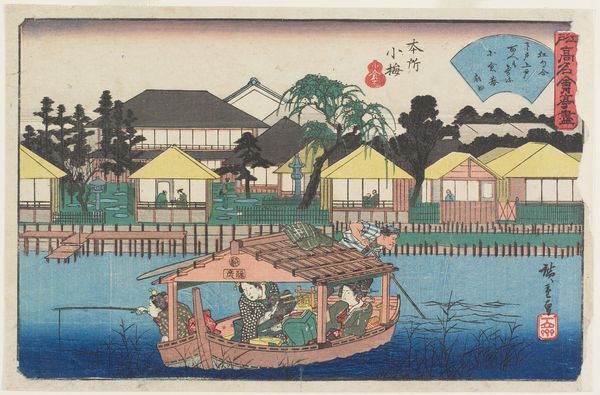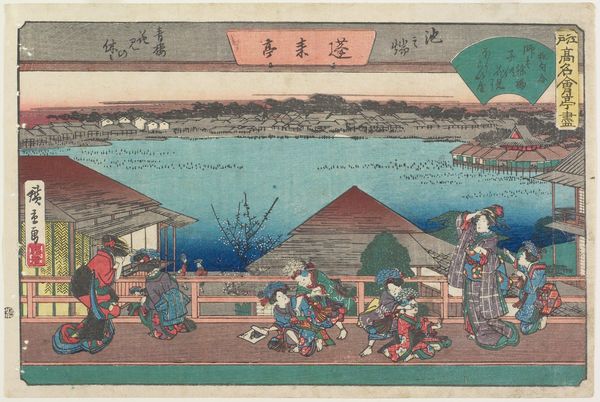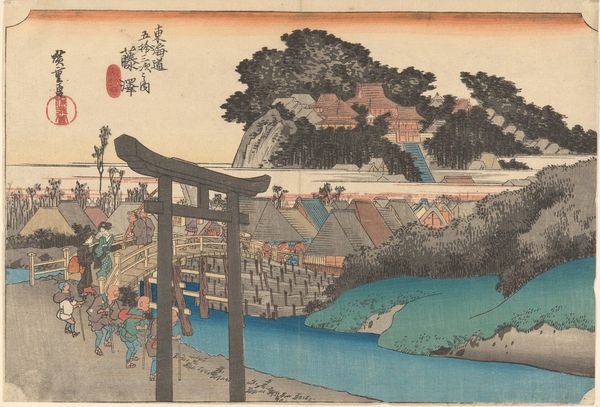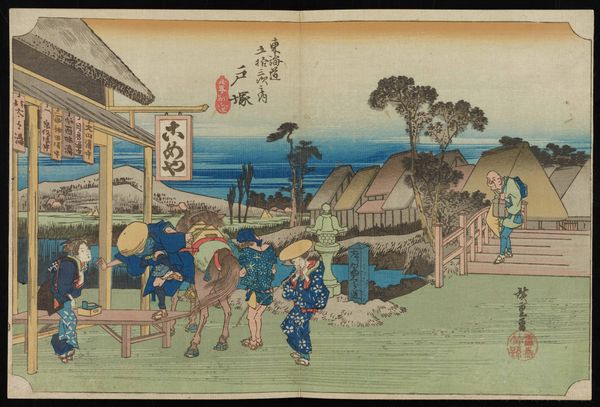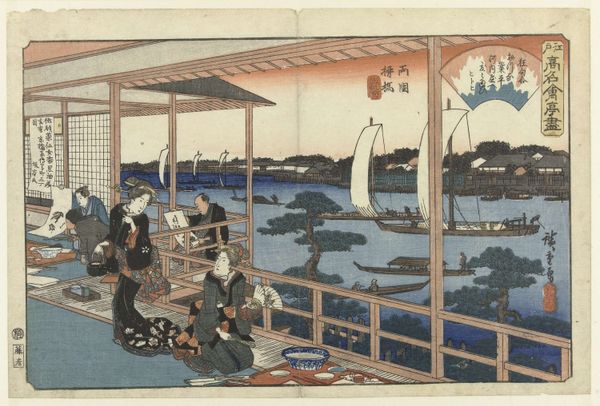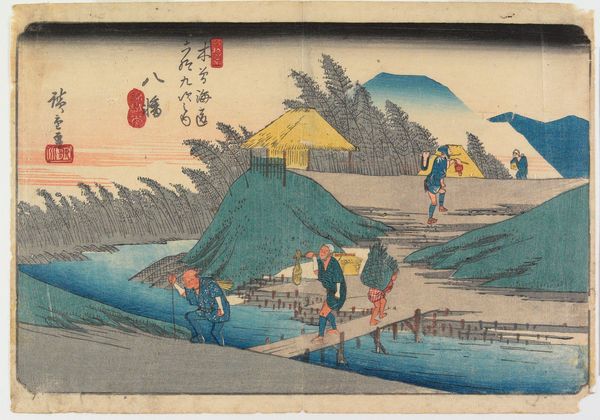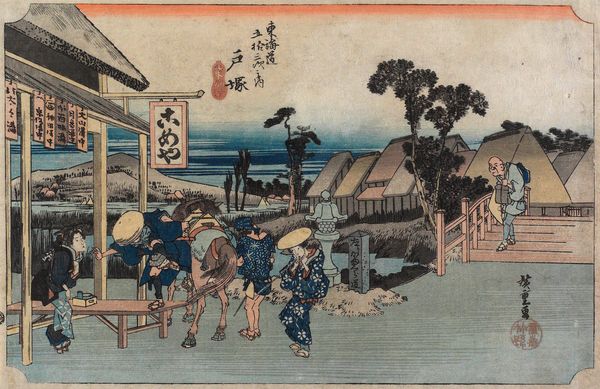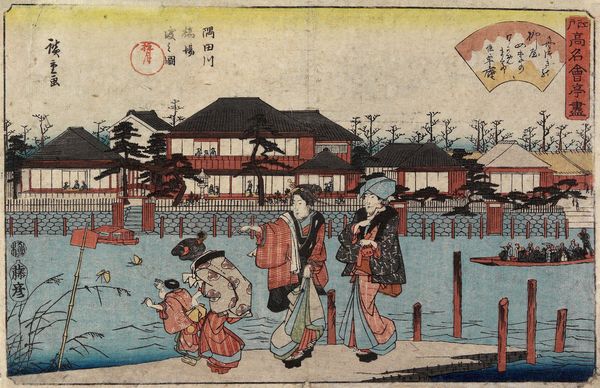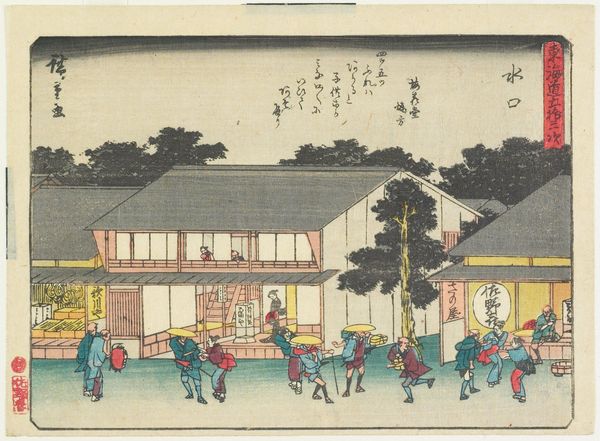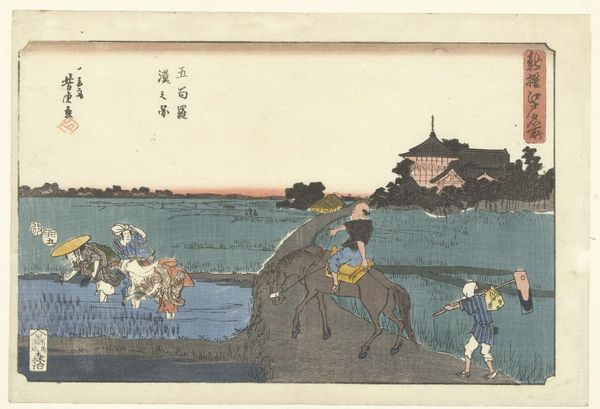
print, ink, woodblock-print
# print
#
asian-art
#
landscape
#
ukiyo-e
#
ink
#
woodblock-print
#
cityscape
#
genre-painting
Dimensions: 8 3/4 × 13 13/16 in. (22.2 × 35.1 cm) (image, horizontal ōban)
Copyright: Public Domain
Curator: This print immediately strikes me as serene. There’s a quiet intimacy to the scene despite its urban setting, wouldn’t you say? Editor: I do, yes. This is "Ōnoshi at Yanagibashi in Ryōgoku," a woodblock print by Utagawa Hiroshige, created around 1838-1840. Notice the details—the layers of color, the subtle gradations… this tells a rich story about the labor and materials involved in ukiyo-e printmaking. Curator: Absolutely, and seeing that story play out in this depiction of Edo society—the figures in the restaurant above, the boaters enjoying leisure— it creates a narrative of class, access, and the everyday negotiation of space. We are offered glimpses of pleasure amidst the city's structural realities. Editor: Precisely. Look at the textile patterns on the women's kimonos; each is carefully rendered, pointing to the importance of textiles as both art and commodity. This kind of detailing highlights not only craftsmanship but also consumption and trade networks of the time. Curator: That connection to consumption is something that I appreciate about this print. Thinking about the parasols, the way these materials both construct and conceal gender, they really point towards the socio-political frameworks influencing these moments of leisure. How are these identities materially constructed, maintained, and even challenged within Edo period Japan? Editor: It's intriguing, isn't it? Woodblock prints like these weren’t "high art" but were mass produced. By focusing on production, we get closer to how these images circulated and shaped perceptions, offering insights into how landscapes were viewed and valued by a broader populace. Curator: Right, it democratized images and thus impacted the perception of space, social dynamics and self. To consider Hiroshige not just as an artist, but as someone mediating and influencing cultural understandings. The artwork, ultimately, shows the tension between individual stories, social norms and nature. Editor: Agreed. Focusing on this tension through material processes reveals much more than just surface appearances—it unlocks understanding around production, consumption, and broader economic realities interwoven with cultural representation. Curator: The stories hidden within plain sight... It adds an entirely new dimension to how we engage with ukiyo-e art. Editor: Exactly, and hopefully will challenge some old hierarchies in seeing "craft" and production as an intrinsic, central element to the artwork’s reading.
Comments
No comments
Be the first to comment and join the conversation on the ultimate creative platform.
